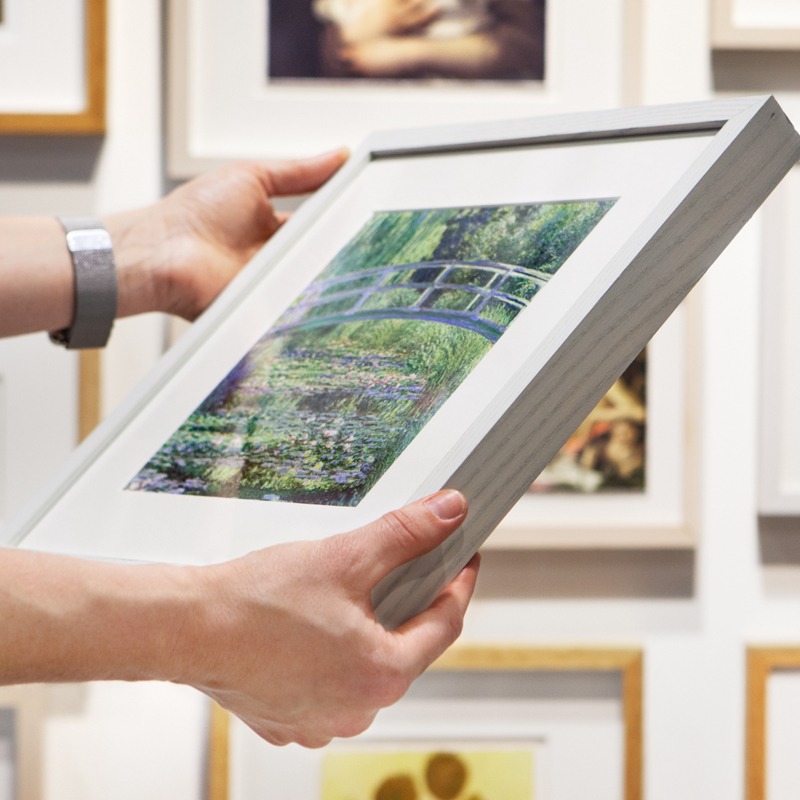Adolph Menzel, 'Afternoon in the Tuileries Gardens', 1867
About the work
Overview
In the summer of 1867, the German artist Adolph Menzel visited Paris for nine weeks. While there, he almost certainly went to Manet’s temporary pavilion, which for a few days was situated near the Universal Exhibition. The pavilion displayed around 50 of Manet’s paintings, including Music in the Tuileries Gardens (1862), also in the National Gallery’s collection.
Menzel began work on his painting of the Tuileries Gardens upon his return to Berlin. Not only was his version a response to Manet’s, it was also the first of what was to become a series of modern urban scenes. Menzel has directly quoted elements from Manet, such as the man in profile wearing a top hat and the crouching child in the foreground, but his picture is not a copy or pastiche. There are significant differences between the two in both composition and technique, and Menzel’s painting might be viewed as a rejection of Manet. Seen together, the two pictures reveal there was more than one way to depict ‘modern life’.
Key facts
Details
- Full title
- Afternoon in the Tuileries Gardens
- Artist
- Adolph Menzel
- Artist dates
- 1815 - 1905
- Date made
- 1867
- Medium and support
- oil on canvas
- Dimensions
- 49 × 70 cm
- Inscription summary
- Signed; Dated
- Acquisition credit
- Bought with the assistance of the American Friends of the National Gallery, London, the George Beaumont Group and a number of gifts in wills, including a legacy from Mrs Martha Doris Bailey in memory of her husband Mr Richard Hillman Bailey, 2006
- Inventory number
- NG6604
- Location
- Room 41
- Collection
- Main Collection
- Frame
- 19th-century German Frame
Provenance
Additional information
This painting is included in a list of works with incomplete provenance from 1933–1945; for more information see Whereabouts of paintings 1933–1945.
Text extracted from the National Gallery’s Annual Report, ‘The National Gallery Review: April 2005 – March 2006’ and supplemented by Isobel Muir.
Exhibition history
-
2016The Spectacular Second Empire, 1852-1870Musée d'Orsay26 September 2016 - 16 January 2017
Bibliography
-
1885L. Gonse, 'Exposition d'Adolphe Menzel à Paris', Gazette des beaux-arts, XXXI/336, 1885, pp. 512-22
-
1890M. Jordan, Adolph von Menzel, Berlin 1890
-
1905J. Meier-Graefe, Adolph von Menzel, Berlin 1905
-
1905H. von Tschudi, Adolph von Menzel, Berlin 1905
-
1941E. Waldmann, Der Maler Adolph Menzel, Vienna 1941
-
1978F. Forster-Hahn, 'Authenticity into Ambivalence: The Evolution of Menzel's Drawings', Master Drawings, XVI/3, 1978, pp. 255-83
-
1980V.M. Ruthenberg, Adolph Menzel: Nationalgalerie, Gemälde, Zeichnungen (exh. cat. Staatliche Museen zu Berlin, 1980), Stuttgart 1980
-
1993G. Lammel, Adolph Menzel: Bildwelt und Bildregie, Dresden 1993
-
1996C. Keisch and M.U. Riemann-Reyher (eds), Adolph Menzel 1815-1905: Between Romanticism and Impressionism, New Haven 1996
-
1996F. Forster-Hahn, 'Adolph Menzel: An Artist's Career Between National Empire and International Modernity', Apollo, CXLVI/418, 1996, pp. 48-53
-
2002M. Fried, Menzel's Realism: Art and Embodiment in Nineteenth Century Berlin, New Haven 2002
-
2006National Gallery, The National Gallery Review: April 2005 - March 2006, London 2006
About this record
If you know more about this painting or have spotted an error, please contact us. Please note that exhibition histories are listed from 2009 onwards. Bibliographies may not be complete; more comprehensive information is available in the National Gallery Library.


